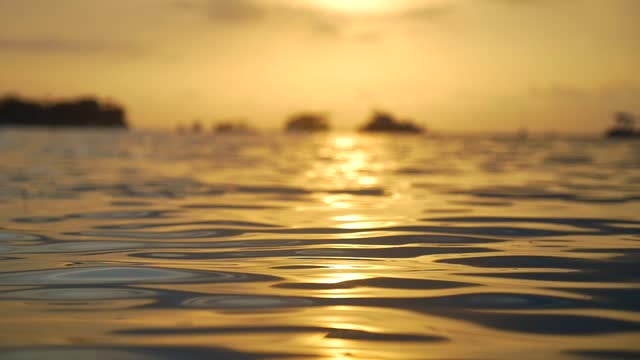Premium Only Content

Amazing Sunset Reflecting Off Sea at Dusk
Amazing Sunset Reflecting Off Sea at Dusk
While sometimes wonderful sunrise and sunset shots can be taken spontaneously without any forethought it’s often the case that the best ones come out of planning. Scope out places that might be good for sunsets in the day or two before your shoot. Look for interesting places where you might not only be able to see the sun track all the way down but where there will be opportunities for shots that include foreground elements and silhouettes.
Sunsets only take half an hour or so so you want to think about these elements before they start or you might miss the shots you’re after.
Find out when the sun will set or rise and get there at least half an hour before hand as it’s often in the lead up to and the time after the sun appears or disappears that the real magic happens.
Keep an eye on the weather also. There are a variety of different types of sunsets that produce a range of different types of lights and patterns in the sky. Don’t just go for clear days for these shots – while they can produce some wonderful colors it’s usually the times where there is cloud around that the real action happens! Also be aware of days when there is dust or smoke in the air as they can produce amazing results also.
Consider ahead of time what equipment you might need. Include a tripod, lenses that will give you a range of focal lengths, extra batteries etc.
Shoot at a variety of focal lengths – wide angle can create sweeping landscape shots but if you want the sun itself to be a feature of the shot you’ll want to be able to zoom right in.
Keep in mind that the sun is just half a degree across so when you shoot with a wide lens it will only be taking up a reasonably small part of the photo. If you want it to be a feature of your shot you’ll need to zoom in on it using anything from a 200mm lens upwards. This will increase your need for a tripod!
Also be aware that when you look at the sun at the best of times it can be dangerous but when you look through a magnifying lens it can be quite dangerous is the sun is still too high in the sky.
As with all photos, sunsets need a point of interest and one of the best ways to add one to a picture is to try to incorporate some sort of Silhouette into the shot. This could be something large like a mountain range, something that is part of the environment like a palm tree or a pier or could even be a person.
The great things about Silhouettes is that they add mood and context to a sunset or sunrise shot. I’ll write more on silhouettes in a future article.
Remember the rule of thirds in your photographing of sunrises and sunsets. While you can always break the rule it’s often a good idea to place elements like the horizon, sun, silhouettes etc off center.
if you let your camera decide what shutter length to shoot at you’re likely to get a shot that doesn’t really capture the beauty of the light. Quite often the shot will be under exposed because the sky is still reasonably light.
Instead of relying upon the camera’s auto mode a sunset is an ideal time to switch your camera into aperture or shutter priority mode and to take a variety of shots at different exposures.
The great thing about sunsets and sunrises is that there is no one ‘right’ exposure and that you can get stunning results using a variety of them. Also keep in mind that different exposures (aperture and shutter speeds) will produce a variety of different results so it’s worth taking more than just a few shots – the key is to experiment.
I tend to switch into shutter priority mode and start with a relatively quick shutter speed and then slowly work down to slower ones.
-
 2:54
2:54
NikosE
4 years agoAmazing Sunset Beach
96 -
 0:11
0:11
Walkamileinmyshoes
3 years agoAmazing last seconds of a sunset
34 -
 3:07
3:07
NASA Space Administration
4 years ago $0.02 earnedScienceCasts: Amazing Sunset Sky Show
47 -
 0:31
0:31
Amal Hermuz
4 years agoSunset Amazing
1161 -
 0:03
0:03
ttstone
4 years agoamazing sunset in sea of korea
20 -
 2:38:44
2:38:44
The Charlie Kirk Show
7 hours agoLIVE: US Bombs Iran - Trump Speaking Soon
409K539 -
 58:11
58:11
Right Side Broadcasting Network
7 hours agoLIVE: President Trump Addresses the Nation Following U.S. Attack on Iran's Nuclear Sites - 6/21/25
320K217 -
 58:44
58:44
The White House
7 hours agoPresident Trump Delivers Address to the Nation, June 21, 2025
195K368 -
 LIVE
LIVE
NEWSMAX
6 months agoNEWSMAX2 LIVE | Real News for Real People
1,136 watching -
 LIVE
LIVE
KLW World News
8 hours agoBREAKING NEWS! US BOMBS 3 NUKE SITES IN IRAN!
1,311 watching